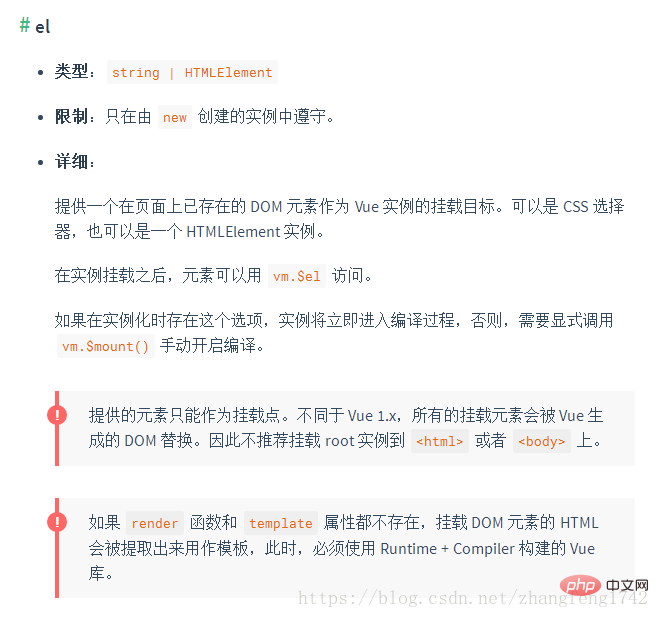
In vuejs, the function of el is to specify the mounting target of the Vue instance, and will provide a DOM element that already exists on the page as the mounting target of the Vue instance; after the instance is mounted, the element can Use "vm.$el" to access.

The operating environment of this tutorial: windows7 system, vue2.9.6 version, DELL G3 computer.
In the vue official API document, el has the following description:
https://cn.vuejs.org/v2/api/#el
 # Everyone knows the role of
# Everyone knows the role of
If there is a render function or template attribute, the mounted element will be replaced by the DOM generated by Vue; otherwise, the HTML where the mounted element is located will be extracted and used Make a template
<!DOCTYPE html>
<html>
<head>
<meta charset="utf-8">
<title></title>
</head>
<body>
<div id="ppp"></div>
</body>
</html>new Vue({
el: '#ppp',
router,
store,
render: h => h(App)
})
new Vue({
el: '#ppp',
router,
components: { App },
template: '<App/>'
})
new Vue({
router,
store,
}).$mount('#ppp')
vue.js Tutorial"
The above is the detailed content of What is the use of vuejs el?. For more information, please follow other related articles on the PHP Chinese website!
 What plugin is composer?
What plugin is composer?
 Can data between Hongmeng system and Android system be interoperable?
Can data between Hongmeng system and Android system be interoperable?
 How to open nrg file
How to open nrg file
 What does Matcha Exchange do?
What does Matcha Exchange do?
 How to use the datediff function
How to use the datediff function
 How to represent negative numbers in binary
How to represent negative numbers in binary
 oncontextmenu incident
oncontextmenu incident
 What keys do arrows refer to in computers?
What keys do arrows refer to in computers?
 WeChat Moments, two dashes and one dot
WeChat Moments, two dashes and one dot